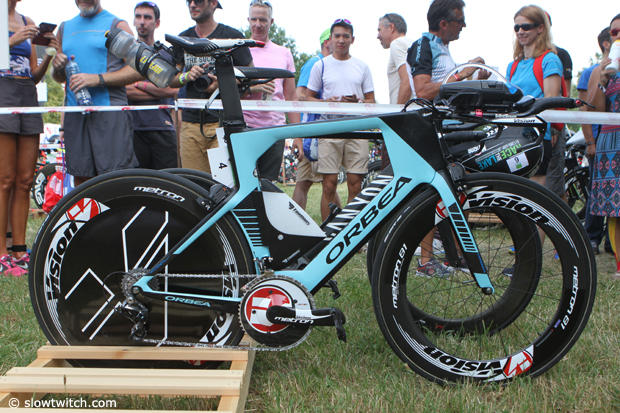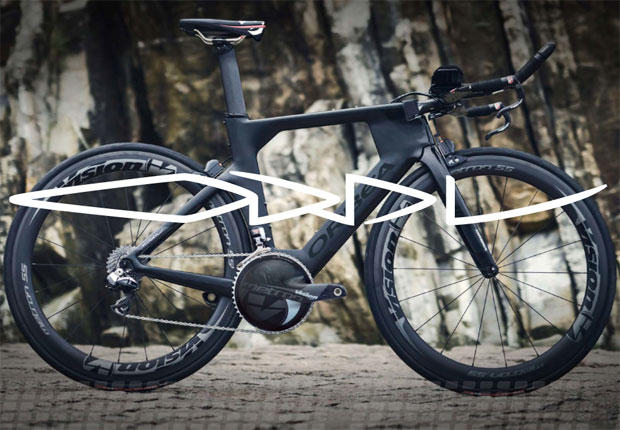Beers with Starky
It’s been a rough start to the 2016 season for Andrew Starkyowicz. He hoped to punch his ticket to Kona with a win at Ironman Texas, but was instead forced to drop out of the race while in the lead due to a stress fracture in his sacrum. While Starky waits for his back to heal he’s keeping busy pulling daddy duty, doing housework and enjoying a few beers. As to the latter, I sat across from him at Half Day Brewing near his hometown of Wauconda for the following.
Slowtwitch: You and Thorsten [Radde] had a lengthy debate about 50 women to Kona that you posted on your blog. What bothers you most about the ongoing debate regarding more pro women in Kona: Is it more that you’re just sick of the public outcry, or are you just looking at it from a statistical standpoint?
Starykowicz: Being an engineer, I look at everything numerically first. Look at who decided on it first. It was Heather Fuhr and Paula Newby-Fraser. You had two women who decided it should be 50 men and 35 women. It wasn’t a guy who decided to screw the women over. So then I took a step back when this whole [50 women to Kona] thing started. I went through and looked at the numbers and it made sense to me—it should be 50 men and 35 women. Just look at it as what it takes for a guy to qualify for Kona and what it takes proportionally for a woman to make it. You look at the last man to qualify and the last woman and it’s about where it should be.
Now there are people saying that maybe we should take away men’s slots—and I’m not necessarily opposed to that. I think fewer men would better fit the tactics of Hawaii. Triathlon was built on being a mano-a-mano sport, and now with all the drafting it’s become more of a tactical race. You’re having guys sacrifice themselves for other athletes. I think 30 is the minimum that you need to have a legitimate world championship.
And look, you have fewer women out there and the same number get paid as the men. I’ll hear people say things like, “Yeah, but men make more money in the sport than women from sponsors.” I don’t know if that’s true. I don’t have those numbers. What I do know is that we need to grow professionalism in the sport. And the way the whole 50 women to Kona thing is being handled is detrimental to the sport.
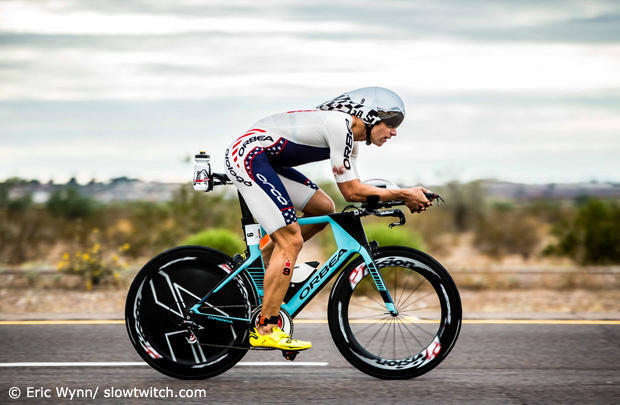
Slowtwitch: I take it you’re not a member of the PTU?
Starykowicz: No.
Slowtwitch: What’s your take on it and did you give any thought to joining when it was announced?
Starykowicz: I gave it a lot of thought. There are so many reasons I decided not to join. They pretty much created it before they did the legwork. The whole organization of it is completely wrong. I’ve worked with unions. They have a good purpose. But they are ways that they need to be managed and run. None of that is being done. Unfortunately for them, I don’t think any of them have any experience working with unions. I don’t think they understand the term. It’s more of an organization than a union. I’m just not interested in any of their antics.
Slowtwitch: Can you see it surviving or do you think in a couple of years it’ll just be remembered as another failed attempt?
Starykowicz: Does it still exist?
Slowtwitch: It does.
Starykowicz: Well that pretty much answers your question.
Slowtwitch: You’ve been pretty outspoken about doping in the past—going so far as to call out past dopers on course. How are you going to feel if Lance Armstrong shows up at a few races if he’s able to enter?
Starykowicz: I’m not interested in seeing him come back to our sport. I don’t like seeing a lot of the athletes who have served doping suspensions compete in our sport. I understand they can be nice guys and nice women, but I think doping should result in a lifetime ban. Competing at this level is a privilege, and if you abuse that you shouldn’t be allowed to race again. It seems like now it’s more accepted than it was 20 years ago. Nina Kraft and Rutger Beke got busted and then they basically got booed out of a room every time they walked in. Now Michi Weiss walks into a room and people want to hug and kiss him. People know how I feel about him. I really don’t think he should be racing.
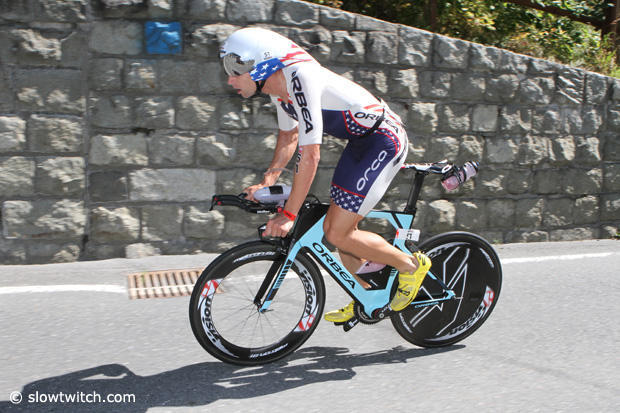
Slowtwitch: Do you think there’s something that Ironman or the governing bodies could be doing that they’re not when it comes to testing and keeping dirty athlete out of the sport?
Starykowicz: I don’t know enough about it. I’m not a doctor. It’s not my area of expertise.
Slowtwitch: How often do you get out-of-competition tests?
Starykowicz: It’s streaky. I’ll go four or five months without seeing them and then I’ll go two months where I see them six or seven times. I kind of like that it’s streaky. Sometimes I’ll see an unfamiliar car park on our street and I’ll think it’s a tester…but usually it’s just some friend of the neighbors smoking a joint in their car. I like that you can be tested at any time.
Slowtwitch: Let’s talk about Ironman Texas. When did you know something was wrong with your back and what have the four weeks since then been like as far as recovery goes?
Starykowicz: That race was a replay of Ironman Florida in 2013—the day I went 7:55 and lost. Texas was unfolding the same way. The swim was slow. I felt like I was playing chess with other athletes. I just wanted to do the minimal amount of work to get out of the swim near the front. Then as soon as I got on the bike I just hit them hard and kept my foot on the gas the whole time. I was shocked at how quickly I got away, considering the size of the group I got out of the water with. I kept my power exactly where I wanted it and rode and a pretty consistent power the entire way.
Slowtwitch: Which was what?
Starykowicz: [Shrugs.] My heart rate was high 140s/low 150s the entire way. Toward the end my heart rate was climbing and my power was dropping and that was more because it was getting really hot. I felt great coming out of T2. I was running well.
Slowtwitch: That was the fastest I’d ever seen your legs turn over at the start of a run.
Starykowicz: It was the best I’d ever felt at that point of a race. I didn’t get any aid at the first aid station because they weren’t ready for me. The second aid station I got aid and then the third one wasn’t ready for me. The new WTC rule has the lead biker riding behind the lead runner. So there I am yelling at the cyclist behind me to ride ahead and make sure the aid stations are ready and he can’t.
Slowtwitch: That doesn’t make a lot of sense. Are they seriously worried about people drafting a bike?
Starykowicz: Yeah, apparently a few people have voiced complaints about the leaders getting an advantage from the bike. It’s the dumbest rule ever and I’ve voiced my issues to WTC and they’ve done nothing. The purpose of the lead bike is to let everybody know the leader is coming. If they are close enough to provide an advantage then they’re not doing their job right. They’re supposed to be up ahead making sure there’s a cop at the intersection and that the aid stations ready. So, yeah, at the third aid station I had to break open my own bag of ice and pour my own water.
But everything else was working perfectly. My nutrition felt right, I was hitting the pace I wanted through seven miles. I felt I was where I needed to be to run in the 2:55-3:02 range. Then at mile 7.5 I came to a turnaround and planted my foot to swing my hips around the cone and immediately felt an intense pain. A week earlier I noticed a dull pain in my glute, but I didn’t really think much of it because there are always weird pains during a taper. But as soon as I made that turn I felt an intense pain. I started walking for a minute but when I tried to run again everything started hurting. Turned out it was an avulsion—a stress fracture—in my sacrum. So since Texas I haven’t trained at all. I’ve been doing housework and that’s it.
I wouldn’t have won the race. I’m the first to admit that. It was so much like the day I got beat by Victor del Corral. When someone runs like [Patrick] Lange did, no one is going to beat him.
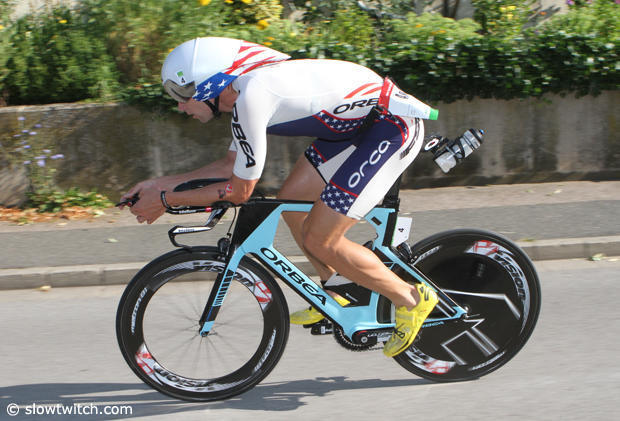
Slowtwitch: So what’s the treatment like and the timetable for recovery?
Starykowicz: Just rest. It’s not a long bone, so you can’t use a bone stimulator. It’s just rest for six to eight weeks and then I’ll get back after it. Before this injury I was thinking Whistler. I figured a top two or three there would get me to Kona. Now I don’t know.
Slowtwitch: Maybe Mont-Tremblant?
Starykowicz: Maybe. I have to get healthy first. I know when I’m healthy I race well. The list of people who can beat me when I’m healthy is very short. I think that showed at Texas. Those guys all rode on each other’s butts. It’s great that you can go back and watch the video. You’ll hear people say the race was really well officiated, but just go back and watch it. Those officials have no clue how to officiate a race if they think that was well officiated. There was blatant rule breaking.
Slowtwitch: Do you think the issue is not having enough officials or not having well-trained officials?
Starykowicz: The current rules aren’t enforceable. The rules are good but they’re not enforceable. I think you have to go to a time gap. Right now you have athletes riding at 10-15 meters per second and what one guy thinks is 12 meters isn’t the same as another. I think using time is really easy to do. Look at a crack in the rode; start a stopwatch when one guy crosses the crack and check the time when the next guy crosses. I think one second is right—a one-second following zone. When the lead athlete’s rear wheel leaves, start the watch and if the next athletes front wheel crosses before one second, it’s a penalty.
Slowtwitch: Have you brought that up with anyone at WTC?
Starykowicz: You’re breaking news right here. I’m going through my list. I think first we need to fix the lead biker problem. This is next on my list.
Slowtwitch: So there’s the lead runner issue, then the drafting issue. What’s issue number three that you want to see fixed?
Starykowicz: The lack of cooperation between WTC and its pro athletes. About two years ago Ironman sent out this email that we all saw—it got posted on Slowtwitch. It basically said they want to work better with us. Don’t say anything bad about Ironman or we’ll suspend you. That was 18 months ago and nothing has changed. I want to know what they want to do to work better with us.
I’ve talked to multiple non-endemic companies about sponsorship and they’re turned off when they hear the word Ironman because they’ve had a bad experience in the past or they’ve heard something negative. Ironman needs to work to get the sponsors that are supporting races to also support the athletes. The PTU talks about how they want to work to get athletes more money, but they’re putting the chicken before the egg.
First there needs to be more money in the sport. There needs to be TV money and then every athlete who competes in a race gets a fraction of that. That gives the athletes an incentive to help promote the race. I think the next step for triathlon is with the sportscasting. They need true, professional sportscasting. You need people who can make a rock in a parking lot sound exciting. Over the last month you’ve had three championship races broadcast [on Ironman.com]. If you want to go to sleep, just watch those.


